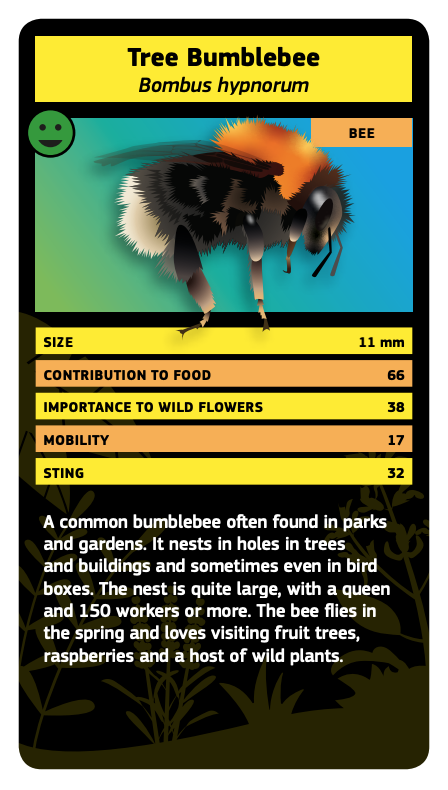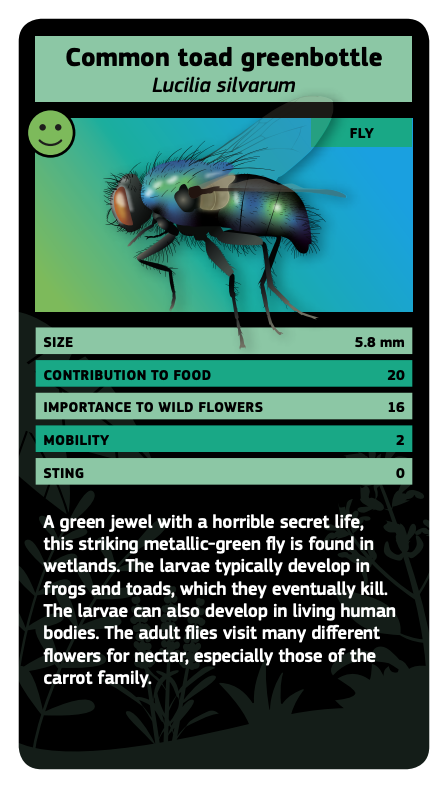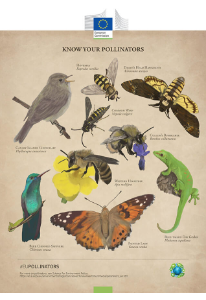You are organising educational or awareness-raising activities on pollinators, and are wondering how to explain different concepts to children and youth in an easy to understand and impactful way? What is the difference between a honeybee and a bumblebee? How does pollination work? Or how to build and maintain bee hotels?
Check out this video produced under the Fruit growers for pollinators and pollinators for fruit growers - and visit their YouTube channel to watch the entire series!
Still looking for more? In the below table you will find educational materials on pollinators collected from a range of Member States and organisations.
| Target audience | Context | Title | Author | Language |
|---|---|---|---|---|
| School children (primary education) | The material consists of a manual, three lessons modules and a presentation. | Nederland Zoemt | Dutch | |
| School children (secondary education) | The material consists of a manual, three lessons modules and a presentation. | Nederland Zoemt on education | Nederland Zoemt | Dutch |
| Children aged >3 | The material consists of colouring books, instructions to make bee hotels, quizzes and videos. | Nederland Zoemt for children | Nederland Zoemt | Dutch |
| School children (primary and secondary) | This material consists of a series of activities integrated in the school curriculum. It presents two blocks of activities, one for primary education and another one for secondary education. Each block is divided into a series of activities with continuity, and their contents and objectives are arranged in a learning sequence. | Teacher’s & environmental educator’s guide | Consejo Superior de Investigaciones Científicas, CSIC | English |
| Children aged > 8 | This guide helps identify a number of invertebrates (including pollinators) and raises children’s awareness about nature. | Identification guide: Bichos de tu entorno, guía de insectors y otros artrópodos | Consejo Superior de Investigaciones Científicas, CSIC | Spanish |
School children aged 9 | This material includes exercises, fact sheets, instructions, a drawing sheet and a movie about bees suitable for the school children | Nature Conservation Society | Swedish | |
| School children aged 10-12 | This material includes exercises, fact sheets, instructions, and a movie about bees suitable for the school children | Nature Conservation Society | Swedish | |
| School children aged 13-15 | This material includes fact sheets, a quiz and a movie about bees suitable for the school children | Övningar och material för åk 7-9 | Nature Conservation Society | Swedish |
| School children aged 8-12 | This dossier provides a short and practical insight into biodiversity: which aspects does the term biodiversity include? What are the main threats? How does it affect our everyday life? It includes some material on bees such as instructions to make bee hotels. | WWF Switzerland Biodiversität Dossier für Lehrpersonen (Biodiversity teaching pack for teachers) | WWF Switzerland | German |
| Children aged 4-6 | This material introduces bumblebees to children, covering their need to feed on wildflowers, how they form nests, the differences between bumblebees and honeybees, and information on how bees see. They include educational activities. | Bumblebee Conservation Trust | English | |
Children aged 7-10 | This material introduces bumblebees to children, covering their need to feed on wildflowers, how they form nests, the differences between bumblebees and honeybees, and information on how bees see. They include educational activities. | Bumblebee Conservation Trust Activity sheets | Bumblebee Conservation Trust | English |








